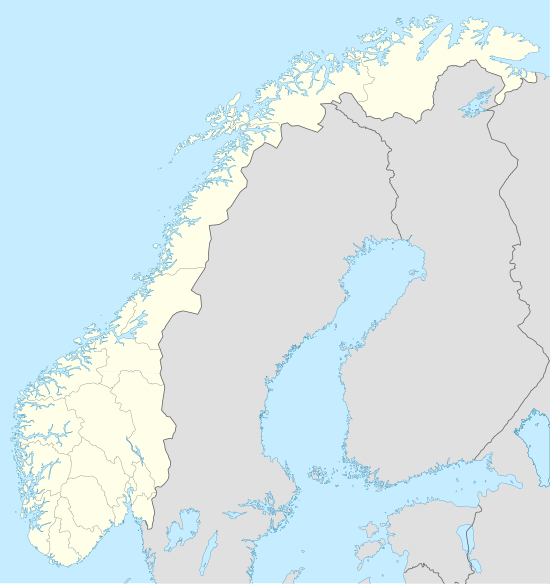Falstad Centre
| Falstadsenteret | |
.jpg) | |
 Location in Nord-Trøndelag  Location in Nord-Trøndelag | |
| Location | Ekne, Norway |
|---|---|
| Coordinates | 63°41′29.08″N 11°2′29.33″E / 63.6914111°N 11.0414806°ECoordinates: 63°41′29.08″N 11°2′29.33″E / 63.6914111°N 11.0414806°E |
| Website | http://falstadsenteret.no/ |
The Falstad Centre (Norwegian: Falstadsenteret) and Falstad Museum is a memorial site in Ekne, Norway.
Location and history
The Falstad Centre is a memorial site and center for human rights.[1][2] The center consists of the Falstad concentration camp and Falstad Woods, which stand nearby and were used as an execution site by the German occupation authorities.[3][4] Today the woods are a war grave and protected national heritage site.
The Falstad Museum was established in 1995 in connection with the 50th anniversary of liberation at the end of the Second World War. It has been set up in the basement of what was the main building of the Falstad concentration camp (German: SS Strafgefangenenlager Falstad). The Falstad Centre foundation was established in 2000 and is a national educational and documentation center covering the wartime history of prisoners of war, humanitarian law, and human rights.[5] The center was opened on October 7, 2006.[1][6]
Exhibitions
The exhibition 70-årsmarkering for ankomsten av jugoslaviske fanger til Norge under andre verdenskrig (Seventieth Anniversary of the Arrival of Yugoslav Prisoners in Norway during World War II) was held at the center in 2012.[7]
See also
- Falstad concentration camp
- Falstad Reform School
References
- 1 2 Ree, Toe Ole. 2016. Åsne om radikale søstre. Innherred (November 30).
- ↑ Reitan, Jon. 2011. The Nazi Camps in the Norwegian Historical Culture. In: Helle Bjerg, Claudia Lenz, Erik Thorstensen (eds.), Historicizing the Uses of the Past: Scandinavian Perspectives on History Culture, Historical Consciousness, and Didactics of History Related to World War II , pp. 57–76. Bielefeld: transcript Verlag, p. 67.
- ↑ Moen, Bjørn M. 2012. Gravskrifter. Trondheim: Communicatio Forlag AS.
- ↑ Reitan, Jon. 2005. Jødene fra Trondheim. Trondheim: Tapir Akademisk Forlag, p. 101.
- ↑ Sem, Leiv. 2014. Black Holes of Memory: Defining a Norwegian Museum of Human Rights. In: Annette B. Fromm, Per B. Rekdal, & Viv Golding (eds.), Museums and Truth, pp. 101–124. Newcastle upon Tyne: Cambridge Scholars Publishing, p. 102.
- ↑ Midjo, Per-Magne. 2015. Jørstad går av som direktør. Trønder-Avisa (June 30).
- ↑ Ognjenović, Gorana. 2012. Thanking the People of Norway / Takk til det norske folk. Jasenovac: Jasenovac Memorial.
External links
- Falstad Centre
- Foreign Minister Jonas Gahr Støre's speech at the opening of the center on October 7, 2006